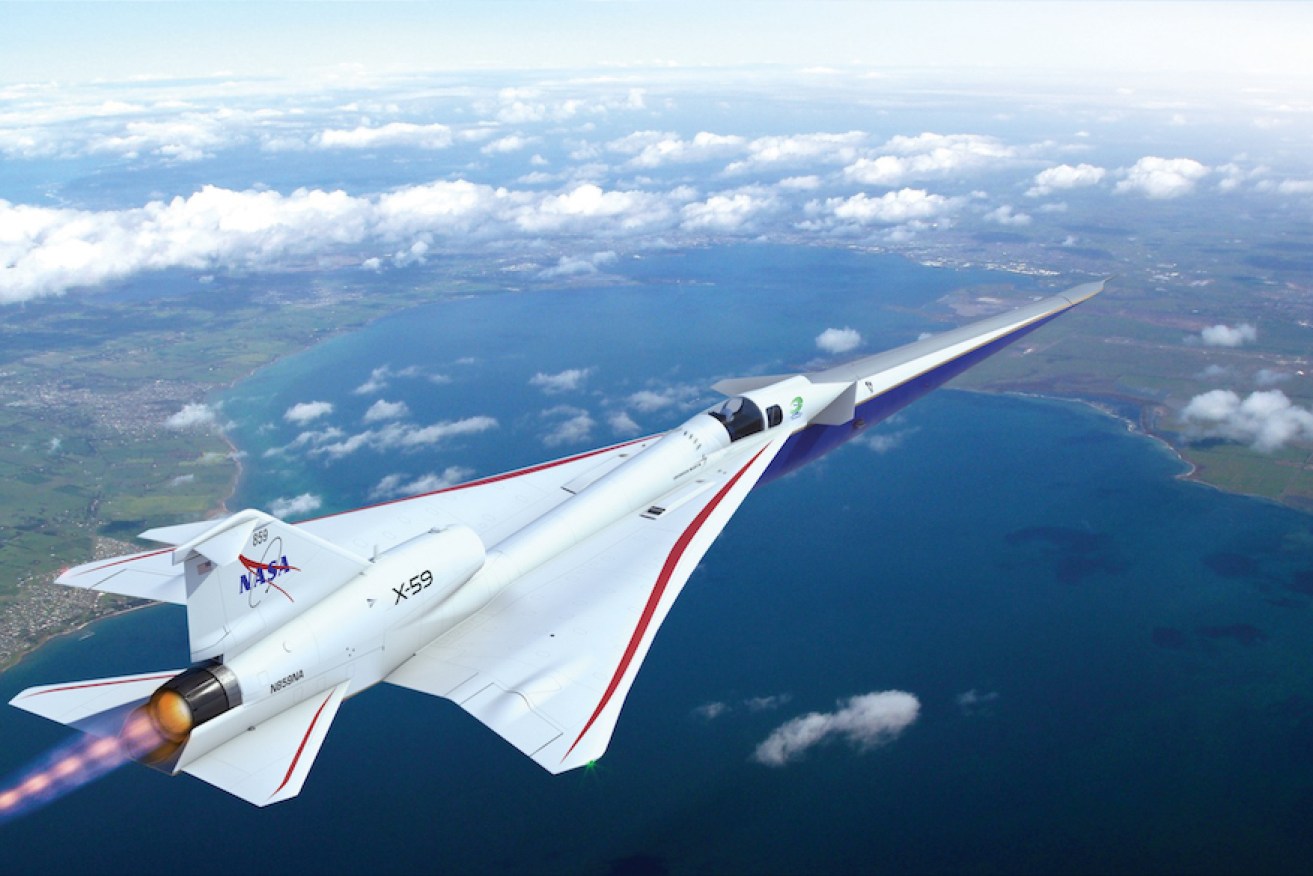High-speed air travel plans gather pace with NASA research


NASA is exploring the possibilities of supersonic passenger travel. Photo: NASA
The idea of flying from one country to another four times faster than what is currently possible may seem like a dream, but NASA could get us there faster than expected.
The US space agency recently investigated the business case for supersonic passenger air travel, where an aircraft could theoretically travel between Mach 2 (2469.6km/h) and Mach 4 (4900km/h) speeds, aka super fast.
Supersonic passenger planes are not a new concept.
The Concorde was the world’s last supersonic passenger jet, which first took off in 1976 and travelled at a maximum speed of Mach 2.04, until retiring in 2003 after safety problems and fatal crashes.
Today, planes travel at about 80 per cent of the speed of sound, known as Mach 1 (1234.8km/h).
NASA’s Glenn Research Centre concluded there are about 50 established routes and potential markets for subsonic travel.
The US and many other nations prohibit supersonic flight over land, so the studies’ findings covered trans-oceanic travel.
However, it’s not just about being able to do it. NASA is hoping to provide data to regulators to change the rules around supersonic flights.
Tweet from @NASAglenn
NASA’s Quesst
NASA is hoping to transform aviation “by enabling a whole new commercial market for supersonic travel over land”.
Quesst is a separate research effort from the Glenn Research Centre and its mission involves NASA’s X-59, the agency’s first purpose-built, supersonic X-plane in decades.
X-59 is a single-pilot plane that will fly faster than the speed of sound, but will do so quietly. The aircraft will hopefully reduce the noise of a sonic boom to a gentle thump for people on the ground.
But building the X-59 is just one part of the mission.
Quesst will fly the X-59 over several parts of the US to gather data on people’s responses to the sound it generates.

NASA’s X-59. Photo: NASA
That data will then be handed over to the US and international regulators and could change the rules around supersonic flights.
“We conducted similar concept studies over a decade ago at Mach 1.6 to 1.8, and those resulting roadmaps helped guide NASA research efforts since, including those leading to the X-59,” said Lori Ozoroski, project manager for NASA’s Commercial Supersonic Technology Project.
“These new studies will both refresh those looks at technology roadmaps and identify additional research needs for a broader high-speed range.”
The next steps
Following the studies into supersonic passenger travel, NASA’s Advanced Air Vehicles Program (AAVP) is ready to move into the next phase of the high-speed travel research.
The next phase includes issuing two 12-month contracts to companies to develop concept designs and technology roadmaps.
“The roadmaps will explore air travel possibilities, outline risks and challenges, and identify needed technologies to make Mach 2-plus travel a reality,” NASA stated.
The first team will be led by Boeing with partners Exosonic, GE Aerospace, Georgia Tech Aerospace Systems Design Laboratory and Rolls-Royce North American Technologies.
Northrop Grumman Aeronautics Systems will lead the second team, with partners Blue Ridge Research and Consulting, Boom Supersonic, and Rolls-Royce North American Technologies.
“The design concepts and technology roadmaps are really important to have in our hands when the companies are finished,” said Mary Jo Long-Davis, manager of NASA’s Hypersonic Technology Project.
“We are also collectively conscious of the need to account for safety, efficiency, economic, and societal considerations. It’s important to innovate responsibly so we return benefits to travellers and do no harm to the environment.”

Once complete, the X-59 is designed to fly supersonic while reducing the loud sonic boom. Photo: NASA
Focus on speed
It’s not just NASA looking into supersonic and hypersonic travel.
There has been a lot of movement in the aerospace industry to make faster travel possible.
Destinus, a private aerospace company from Switzerland, has been working on hypersonic planes for passenger transportation and cargo.
Destinus said one of its hypersonic planes could transport passengers from Sydney to Frankfurt in four hours and 15 minutes, down from 20 hours.
Airlines have also entered partnerships with companies that are hoping to deliver supersonic travel.
In 2017, Japan Airlines and Boom Supersonic announced a “strategic partnership”.
Boom has been working on Overture, which will fly at twice the speed of today’s airliners, the company said.
Airlines sign up
Since then, United Airlines and American Airlines have signed purchasing agreements with Boom.
It is expected that Overture will have its first flight in 2027, and receive its type certification two years later.
Although the possibilities for hypersonic or supersonic travel are endless, there are some concerns.
Anand Veeraragavan, co-director at the University of Queensland’s Centre for Hypersonics, previously told The New Daily that flying from one side of the world to another in a short period of time was “alluring”, but there are some challenges.
He said that a vehicle travelling at Mach 5 (6174km/h) would experience “quite severe” frictional heating.
Although hopeful hypersonic travel will be a reality in the next decade, he warned that the high cost of materials and fuel could be reflected in ticket prices.








